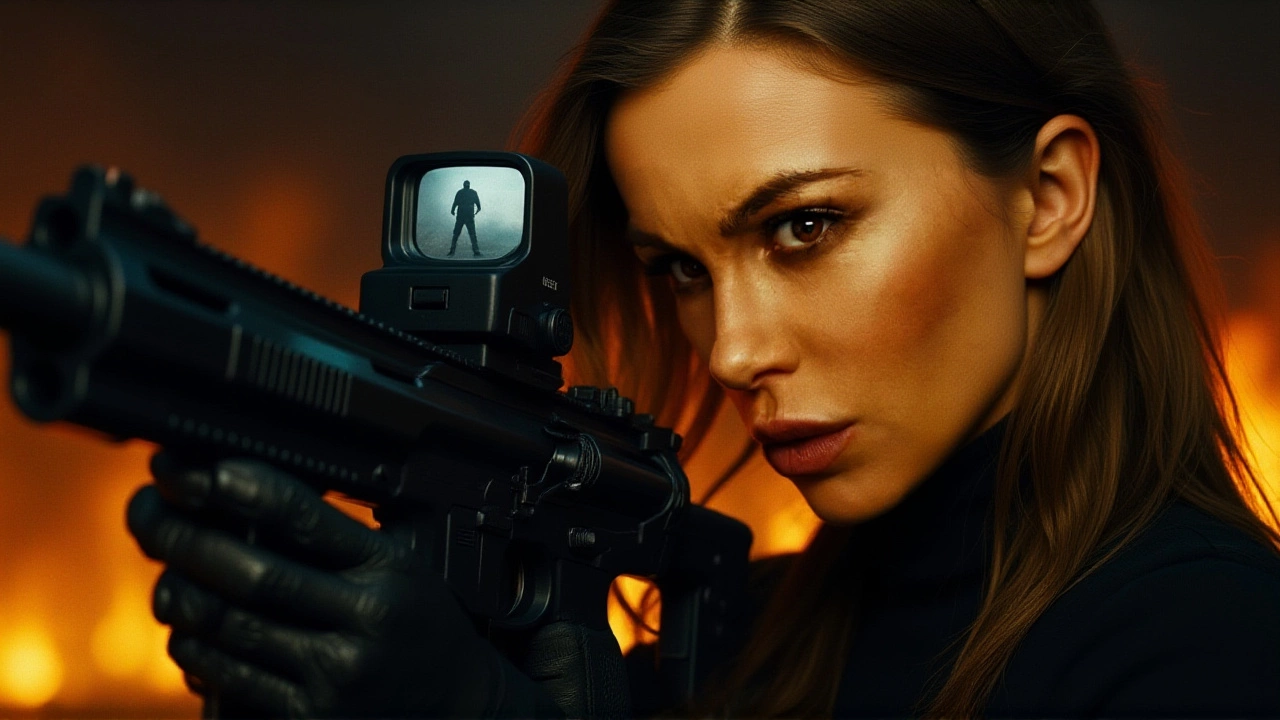When Kate Beckinsale collapsed on the set of Canary Black in late 2024, she didn’t just hurt her knee—she shattered the unspoken Hollywood rule: don’t complain. Three months later, under threat of court sanctions, her legal team dropped the pseudonym 'Jane Doe' and revealed her identity in a blistering lawsuit filed in Los Angeles Superior Court. The defendants? Anton Entertainment Media Services, Inc. and producer John Zois. The allegations? Negligence, battery, and intentional infliction of emotional distress—all stemming from what Beckinsale’s lawyers say was a reckless, profit-driven disregard for her safety.
‘They Made Me Keep Shooting’
Beckinsale, who plays CIA operative Avery Graves in the Amazon MGM thriller, didn’t just do her own stunts—she trained for them for months. But when a fall during a high-speed vehicle sequence tore ligaments in her right knee, the response from production wasn’t concern—it was pressure. According to court documents, Beckinsale’s medical team advised immediate rest and physical therapy. Instead, she was told to ‘push through.’ The pain became unbearable. Bruises spread across her leg. She filmed with a brace, then without one. At one point, she reportedly had to be helped off set after a scene. Still, the cameras rolled. Her legal team, led by high-profile attorneys Marty Singer and Brian Panish of Panish Shea & Boyle LLP, says this wasn’t an accident—it was a pattern. ‘They treated her like a replaceable prop,’ one source close to the case told us. ‘Not a lead actor. Not a veteran. Just a body that needed to move on cue.’The Instagram Post That Changed Everything
Before the lawsuit, Beckinsale quietly documented her injuries on Instagram. She posted photos of swollen knees, deep bruises, and bandages—alongside captions defending her physical commitment to the role. ‘I did every stunt they asked me to,’ she wrote in one post. ‘If you think I’m not the one falling, you’re wrong.’ The post went viral. Fans rallied behind her. Critics doubled down, accusing her of exaggerating. That’s when the legal strategy shifted. Filing as ‘Jane Doe’ was meant to avoid the circus. But when Anton Entertainment’s attorneys tried to dismiss the complaint for lack of specificity, Beckinsale’s team responded with a 47-page amended filing—complete with internal emails, medical records, and stunt coordinator logs. That’s when her name hit the docket.
A Rare Move in Hollywood
Actors sue studios all the time—for breach of contract, unpaid residuals, defamation. But suing over an on-set injury? That’s practically unheard of. Most settle quietly through workers’ comp or insurance. Beckinsale’s case is only the second of its kind in recent memory—following Blake Lively’s lawsuit against Justin Baldoni over alleged abuse on It Ends With Us. But here’s the twist: Beckinsale’s suit was filed weeks before Lively’s became public. This isn’t copycat litigation. It’s a reckoning. Why? Because the stakes are higher than ever. Anton Entertainment Media Services, Inc. just secured $100 million in funding from BlackRock to churn out mid-budget action films. Canary Black was supposed to be their breakout hit. And Beckinsale? She was their biggest asset. Her name sells tickets. Her body sells trailers. But when that body breaks? The calculus changes.What’s at Stake for the Industry
This case isn’t just about one actress’s knee. It’s about the entire culture of ‘suck it up’ in action filmmaking. Stunt performers have long fought for better protections. But now, a leading actress—someone with the clout to make headlines—is demanding the same. If Beckinsale wins, studios will have to rethink how they handle injuries to principal actors. No more ‘just keep going.’ No more ignoring pain. No more hiding behind NDAs. Industry insiders say the lawsuit could force the Screen Actors Guild to update its safety guidelines for non-stunt performers. Right now, there’s no formal protocol for actors who aren’t classified as stunt personnel but are still performing dangerous sequences. Beckinsale’s case may change that.
What Happens Next
The court has set a preliminary hearing for March 2025. Anton Entertainment has denied all allegations, calling them ‘baseless and sensationalized.’ But the documents tell a different story. Emails show producers discussing ‘minimizing downtime’ and ‘avoiding insurance claims.’ One memo reads: ‘We can’t afford to shut down for rehab. The schedule is locked.’ Beckinsale’s legal team is seeking unspecified damages—but they’re not just after money. They want a precedent. They want safety rules written in stone. And they want producers to know: if you break someone’s body, you’ll have to answer for it.Frequently Asked Questions
Why did Kate Beckinsale file under the name 'Jane Doe'?
Beckinsale’s legal team initially filed under the pseudonym 'Jane Doe' to avoid media scrutiny and prevent Anton Entertainment from launching a public relations campaign to discredit her. This tactic is common in high-profile cases where reputation damage is a risk. Once the defendants challenged the complaint’s specificity, her identity was revealed in an amended filing under court sanction to meet legal standards.
How common are lawsuits like this in Hollywood?
Extremely rare. Most actors settle on-set injury claims privately through insurance or union arbitration. Only one other comparable case exists in recent years: Blake Lively’s lawsuit against Justin Baldoni. Beckinsale’s case is notable not just for its claims of battery and emotional distress, but because it targets a mid-budget studio—showing that even smaller productions aren’t immune to accountability.
What role did BlackRock play in this situation?
BlackRock provided $100 million in funding to Anton Entertainment to produce genre films like Canary Black. While BlackRock isn’t named in the lawsuit, its financial backing increased pressure on producers to deliver the film on schedule and under budget. This financial urgency may have contributed to the decision to push Beckinsale to continue working despite injury, according to industry analysts.
Why are claims of 'battery' and 'intentional infliction of emotional distress' significant?
These aren’t standard injury claims. Battery implies intentional harmful contact—suggesting producers knowingly forced Beckinsale to perform despite knowing her condition. Emotional distress claims point to psychological harm from being pressured, mocked, or ignored. Together, they signal that her legal team believes this wasn’t negligence—it was cruelty. That’s a much harder case for the defense to dismiss.
Could this change how stunt sequences are filmed in the future?
Absolutely. If Beckinsale prevails, studios may be forced to create new safety protocols for principal actors performing physical stunts—even if they’re not classified as stunt performers. Union guidelines could expand, and insurance policies might require mandatory medical evaluations before action sequences. This case could become the new benchmark for on-set responsibility.
Is Kate Beckinsale done with action films?
She hasn’t said. But her Instagram post after the lawsuit was filed read: ‘I love this work. I just won’t let them break me for it.’ That’s not a retirement announcement. It’s a warning. If the industry doesn’t change, she may walk away—not because she can’t do the stunts, but because she won’t do them under these conditions.

